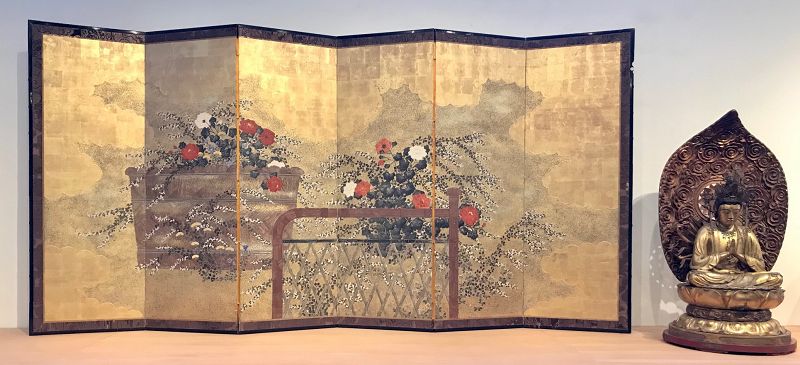Japanese small kesa, Buddhist priest's vestment cloth to be worn over robes. Often described as a mantel or robe, the kesa is worn draped diagonally over the left shoulder and under the right armpit. Meant as a reminder of the Buddha's own simple patched garment, kesa are formed from fragments of cloth donated to the temple by wealthy devotees. Within each garment, the fragments are typically organized in a series of columns framed by a border with miters corners. The number of columns, in this case 2, indicates both the specific function of that garment and also the rank of the wearer within the religious hierarchy. Four additional squares of the gold and red silk brocade reinforce points of stress from wear but have symbolic value as well.
Age: Edo Period (early 19th century)
Dimensions: 12" wide x 59 1/2" long
Japanese Antique Small Kesa Cloth (Buddhist Priest's Vestment)
$450.00
https://zentnercollection.com/product/japanese-antique-small-kesa-cloth-buddhist-priests-vestment/


